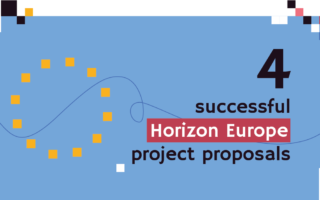What's
Evaluation of the strategic communication in Slovakia
One of the forms of combating misinformation is the strategic communication of state institutions. The aim of strategic communication is to communicate important topics to citizens systematically, proactively and from a long-term perspective. In this way, it is possible to spread truthful information as a precaution, as well as to react in response to the emergence of new disinformation narratives.
The strategic communication of state institutions in the Slovak Republic has significantly improved in the past period, especially during the COVID pandemic. However, the room for further improvement is still significant.
Experts from KInIT participated in a project to analyze the strategic communication of Slovak state institutions. In this project, GLOBSEC together with partners from the state administration focus on improving strategic communication in the Slovak Republic.
The analysis is the input activity of the aforementioned project. Its aim was to assess the current capacities, needs and deficiencies in the state administration so that the next phases of the project could address specific deficiencies. The results of the analysis provide an overview of the perception of strategic, routine and interdepartmental communication and the issue of misinformation by government officials. The analysis also focuses on topics that have dominated social networks, while also providing examples of good practices. The output of the analysis is a set of recommendations on how to improve strategic communication in the Slovak Republic.
Automatic analysis of social media posts
KInIT contributed to the analysis primarily by automatically analyzing the posts published by government bodies, ministers and the President between March 21, 2020 and March 10, 2022 by the means of machine learning methods.
KInIT’s role consisted of two parts:
- A separate analysis of 35 public Facebook pages in terms of key topics that dominated their communication during the monitoring period.
- Analysis of individual subtopics: Ukraine, EU, NATO and vaccination
The data came from the CrowdTangle database (analytics tool), with a total of 34,213 posts.
The solution developed by KInIT used elements of artificial intelligence and consisted of two parts:
- Text preprocessing. In order to achieve higher quality results of the analysis, the original text of the posts had to be transformed into a cleaner version. The result was a sequence of basic word forms, which was then used for topic extraction.
- Topic modeling. We applied a machine learning model that clusters similar words based on their common frequency of occurrence in the posts. Each topic contains keywords that can be used to name the topic.
In this way, we obtained the topics and post counts that were the most communicated by each profile. We repeated the process for the subtopics Ukraine, EU, NATO and vaccination. The output of topic modeling was further processed and evaluated by the GLOBSEC experts.
Topics communicated
Measures, testing, the border regime, healthcare and the overall situation regarding the COVID-19 pandemic have been the most dominant topics of the last two years.
The Ministry of Health of the Slovak Republic was the one to inform the most about the pandemic. The pandemic was also a popular topic with the Ministries of the Interior, Defense, Culture and Finance.
Vaccination was communicated in about the same scope as the other four topics. The term “vaccination” was mentioned 2,025 times during the monitoring period, which represents almost 6% of all posts.
Topics related to police, hoaxes and frauds were also widely represented.
On the positive side, there was a high incidence of posts about the EU and NATO, but also justice.
Personal stories of employees or department representatives are used by many government bodies to make their communications more human.
Understandably, the number of posts about the war in Ukraine increased towards the end of the reporting period.
The analysis of individual subtopics also showed the number of posts and identified the representatives who communicate these subtopics the most.
The European Union was the subject of approximately 7-8% of all the posts. Given the unique role that the EU plays in the development of Slovakia and the fundamental way in which it affects many areas of everyday life of people in Slovakia, this is a relatively low number.
Topics that weren’t communicated
Narratives based on democracy, tolerance and human rights are the topics that we would expect in terms of strategic communication. However, these topics haven’t been generated by the AI system.
In the posts from all institutions (over 34,200), the word “democracy” was mentioned 426 times, which is approx. 1.2%. The word “tolerance” was mentioned only 98 times in all contributions. In terms of strategic communication, democracy could have been more present in the communications.
Read the complete analysis (in Slovak only) with the results of the questionnaire on strategic communication answered by state and public administration staff. You will also find out about specific recommendations on how to improve communication of institutions with the public in Slovakia.

